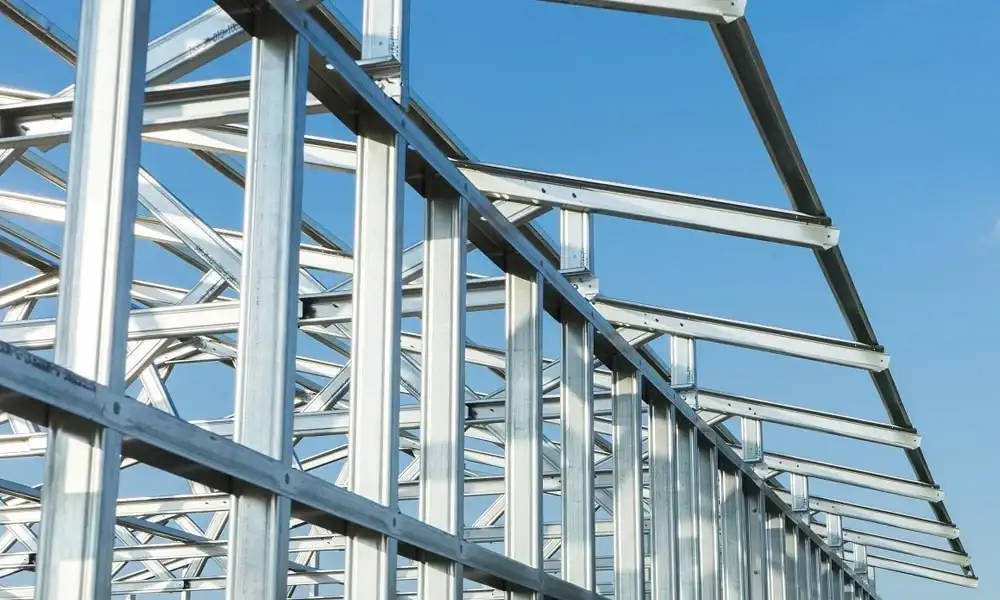Explore the Advantages and Disadvantages of Aluminium from this guide. It is the most popular material in the modern construction process. It provides a reliable alternative to old materials like steel and concrete. It consists of unique attributes that make it a preferred choice by every investor. But with a lot of advantages, it also has some limitations that engineers must carefully understand before installing aluminium.
Without any further delay, let’s discuss the about aluminium:
DIG INTO THE ADVANTAGES AND DISADVANTAGES OF ALUMINIUM IN STRUCTURAL USE AND DECIDE WHETHER TO USE IT FOR YOUR NEXT PROJECT OR NOT!
Advantages of Aluminium in Structures
1. Exceptional Strength
It offers an exceptional strength-to-weight ratio. The density is almost one-third that of steel.
This property of aluminium shows why it is so beneficial in complex building construction. Due to reduced self-weight, the requirements of the foundation also decrease. This helps to improve the overall performance.
2. Superior Corrosion Resistance
Aluminium provides a natural treatment to prevent resistance to atmospheric corrosion. It consists of an oxide layer which protects the aluminium. This property makes it an ideal choice for industrial projects. If we compare aluminium with steel, much less maintenance cost is required.
3. Design Flexibility and Formability
The feature of aluminium allows for complex shapes and architectural needs. Due to this, less material is required. Architects and engineers can create desired designs that are not possible with other materials. Moreover, it also allows the experts to design custom parts. They easily combine and can be used for several purposes.
4. Longevity
Smartly designed aluminium structures have a very long lifetime. Usually, you can expect almost 50 to 80 years. As compared to steel or wood, aluminium does not catch rust. This makes this material durable and requires less maintenance. So, it is a good long-term investment material.
5. Sustainability
Aluminium is also recycled without losing its quality. It is recycled and it converts into new aluminium. This material is easy to recycle. If we look into the old aluminium structures, they can be reused smartly, which is perfect for modern construction.
6. Rapid Construction
Aluminium is lightweight, which makes it super easy to handle and transport. Experts can also install it in the buildings without any problem. If you choose to install prefabricated aluminium, then it can be quickly installed or put together quickly on site. You can easily save your labour expense and time. However, it is highly recommended for those people who have tight timelines!
7. Non-Magnetic and Non-Sparking Properties
Well, aluminium is not only favoured in the construction sector. It is also used in MRI rooms and areas with explosive materials. However, it is safe to use because it does not attract magnets.
Disadvantages of Aluminium in Structures
1. Lower Elastic Modulus
Aluminium is considered three times less stiff than steel. Its elastic modulus is around 70 GPa compared to steel’s 200 GPa.
Due to this reason, aluminium bends more under the same load. Plus, in various structural designs, this bending becomes a much bigger concern than strength. Builders have to control this bending by using thicker aluminium sections. More sections will increase your overall cost.
2. Higher Material Costs
This type of material costs about 3 to 5 times more per unit weight than structural steel. But due to its feature of a high strength-to-weight ratio, it balances the difference. It is better to get an expert cost estimation for aluminium projects. With accurate estimates, you can handle your allocated funds.
3. Temperature
The strength of aluminium drops at high temperatures. That is why the buildings that are made with aluminium require extra care. However, the cost is increased due to design complexity.
4. Lower Fatigue Strength
When aluminium repeatedly has to experience changing loads. It does not perform well. That is why it has no definite fatigue limit. That means, such constant issues can cause cracks. It is highly recommended that engineers take extra care while using aluminium instructors.
5. Galvanic Corrosion Concerns
When aluminium touches other types of metals in moisture, it fails quickly. This is called galvanic corrosion. To prevent this situation, engineers must design connections carefully. They must use isolation materials when aluminium is joined with metals. If it is not done carefully, the structure can weaken.
6. Limited High-Strength Options
You need to know that different aluminium have various strength levels. The strongest ones are used in aerospace. They usually reach only about 500–600 MPa yield strength. But, steel is more than this strength.
Conclusion
So, from the advantages and disadvantages of aluminium, now you have the right knowledge. Its features make it a favourable choice in modern construction. But, its higher costs require careful consideration during design. No worries, if you hire a professional construction estimating company, you can handle your budget easily. They provide a cost breakdown of everything with respect to project requirements.

